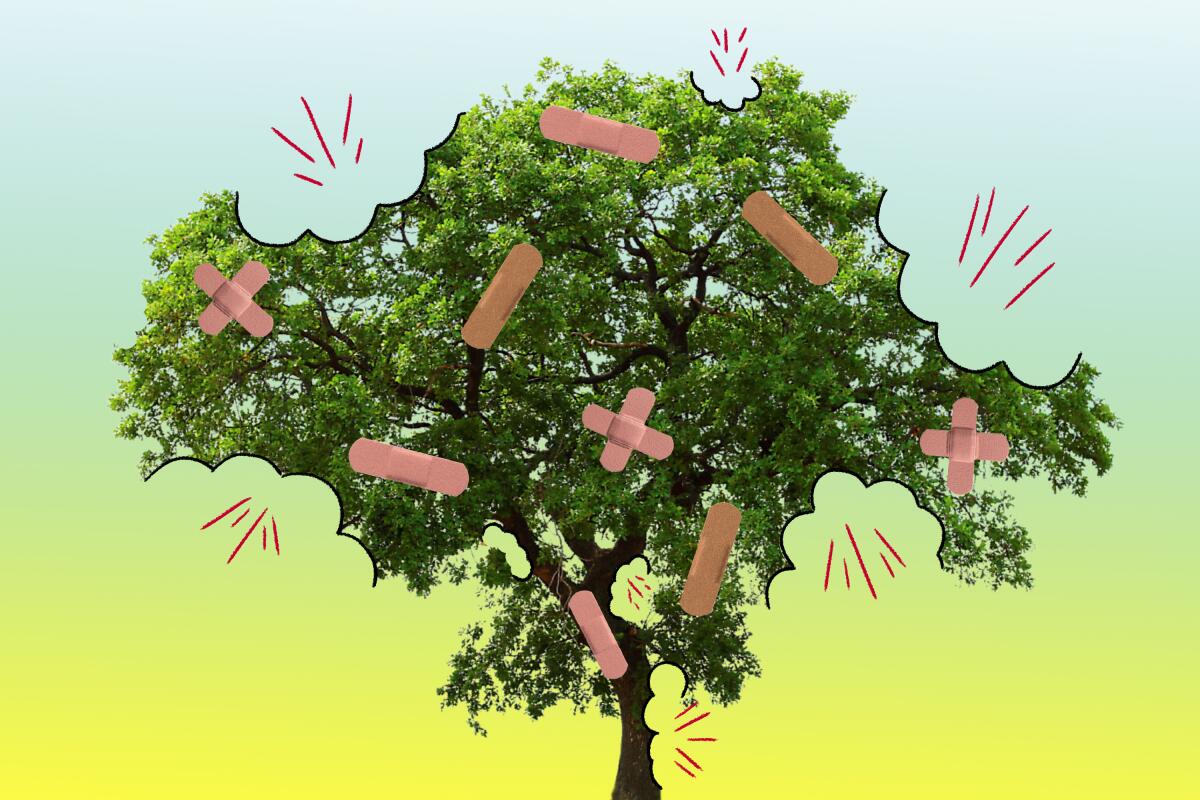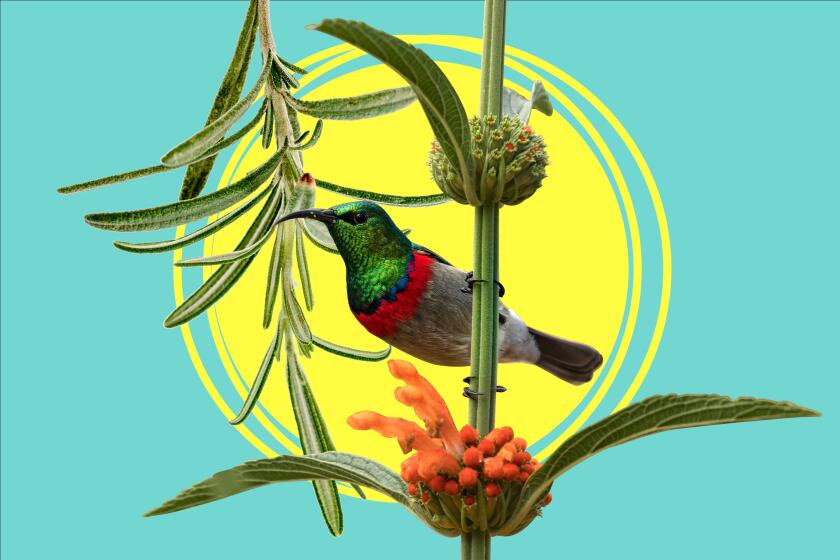How to protect your trees from invasive beetles killing SoCal’s urban forests

- Share via
The names of these tree-destroying beetles are ominous enough — goldspotted oak borer and invasive shothole borer — but the real nightmare is what they’re doing to our urban trees.
“They’ve killed hundreds of thousands of trees” since these invasive beetles were discovered in Southern California nearly 20 years ago, said Beatriz Nobua-Behrmann, urban forestry and natural resources advisor for UC Cooperative Extension for Los Angeles and Orange counties. “They basically wiped out all the native willows in [San Diego County’s] Tijuana River Valley in just a year. We need people to be vigilant.”
The goldspotted oak borer (a.k.a. GSOB) has been found in three varieties of oak trees in Southern California: canyon live oak — the most widely distributed oak in California — coast live oak and California black oak. The beetle was discovered in San Diego County in 2004 and likely arrived in California in firewood brought in from Arizona or Mexico, researchers say. The GSOB larvae feed on the cambium layer beneath the bark, which is vital for the tree’s health and growth. A large enough infestation eventually kills the tree.
Gabe Verduzco is the surfing “garden bro” working to save SoCal’s urban forests, one invasive beetle hole at a time.
Researchers believe the invasive shothole borer arrived in wood pallets or products from Vietnam and/or Taiwan. It was discovered in the Whittier Narrows in 2003 and has been spotted as far south as San Diego County and as far north as Santa Barbara County. It’s far less picky than G-SOB beetles. Invasive shothole borers have sickened at least 65 varieties of SoCal urban trees — such as box elders, maples, willows, sycamores, oaks and cottonwoods — by infesting them with their primary food source, fusarium fungus. Beetles “farm” the fungus, eventually blocking the tree’s vascular system, shutting off the flow of water and nutrients, which causes branches and then the entire tree to die.
The UC Agriculture and Natural Resources program has a primer for how people can spot infestations of GSOB and invasive shothole borers and lists the trees most susceptible to the shothole borers, which include native and non-native varieties. Here are some tips from Nobua-Behrmann:
Drought-resistant plants like hummingbird sage and rosemary are the ideal addition to Southern California gardens.
—Look for trees that have dieback — dead or dying upper branches — plus tiny holes in the trunk or larger branches and rust-colored stains on the trunk. GSOB beetles make a D-shaped exit hole.
—Trees with a light infestation can be pruned or treated with insecticides to kill the beetles, but if they have dead branches and more than 150 exit holes, that’s a good indication that the infestation may be too severe to be treated. In that case, the best option is to cut the tree down, or at least remove the dead branches.
—Immediately chip or burn infected wood to kill the beetles. Don’t save infected wood for your fireplace.
—Don’t spray your tree with insecticides to try to prevent an infestation. Effective insecticides require a permit for use, and “we don’t want to be spraying insecticides in the environment if you don’t have an active infestation.”
—Call your county’s cooperative extension office, master gardeners’ program or agricultural commissioner office, or consult this list of certified arborists provided by the International Society of Arboriculture at treesaregood.org.
Temperatures in inland Southern California could dip toward freezing this week. Here’s how to protect your tender plants.
More to Read
Sign up for The Wild
We’ll help you find the best places to hike, bike and run, as well as the perfect silent spots for meditation and yoga.
You may occasionally receive promotional content from the Los Angeles Times.














